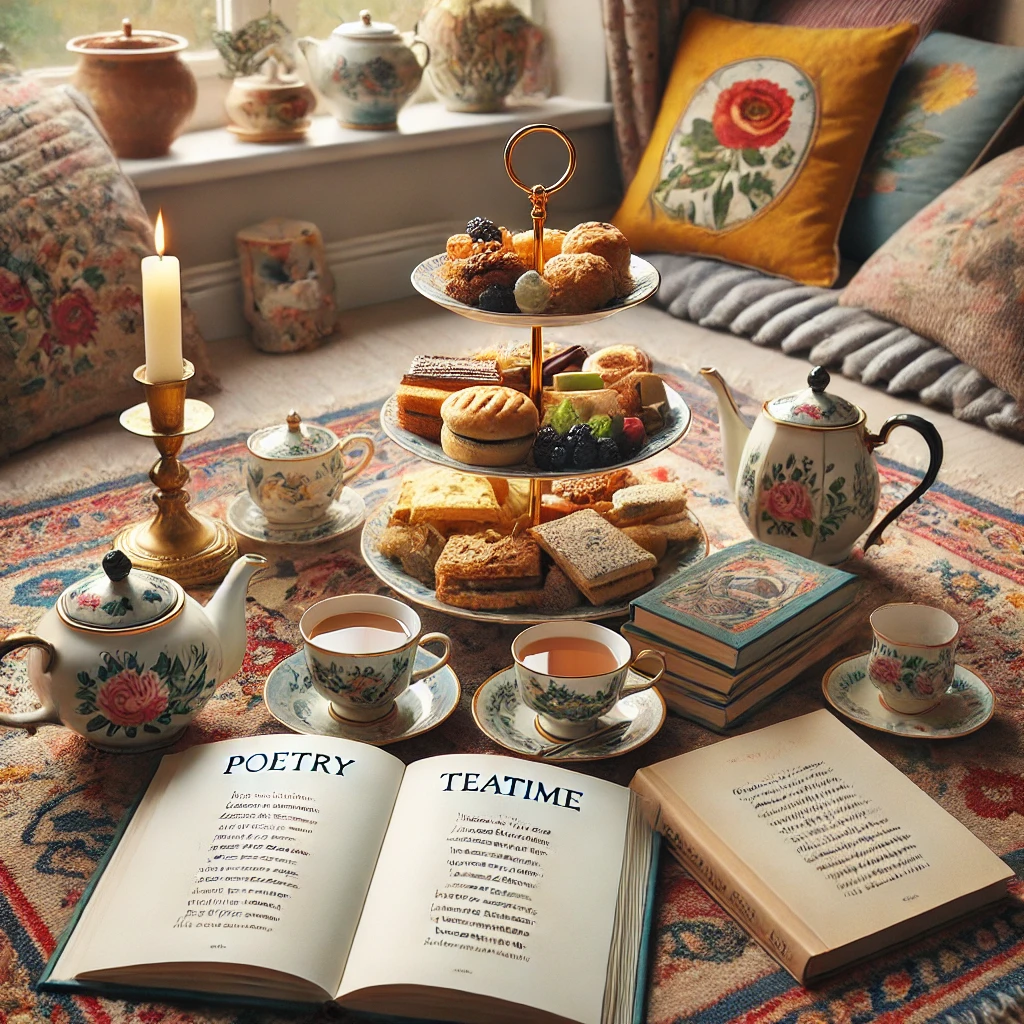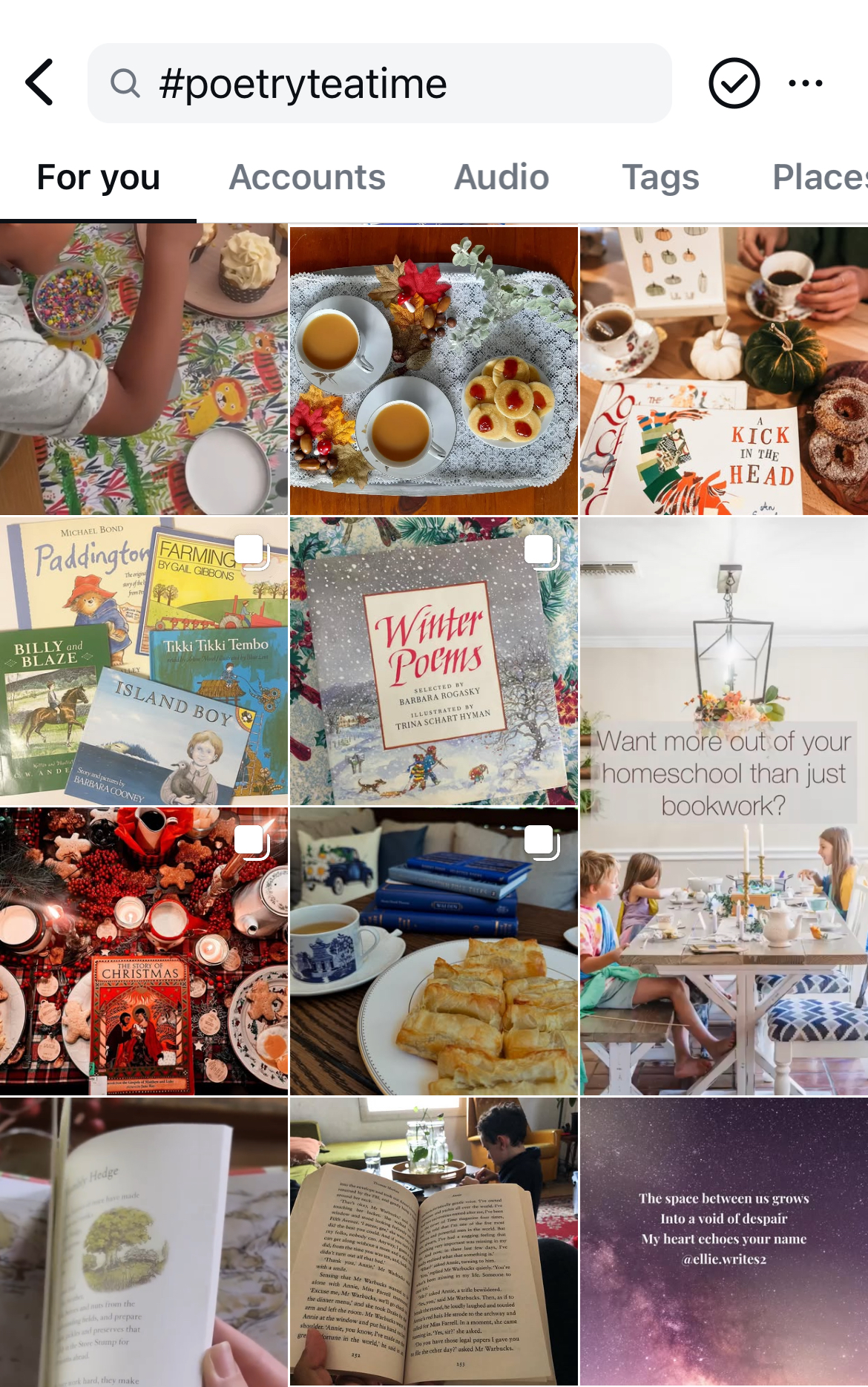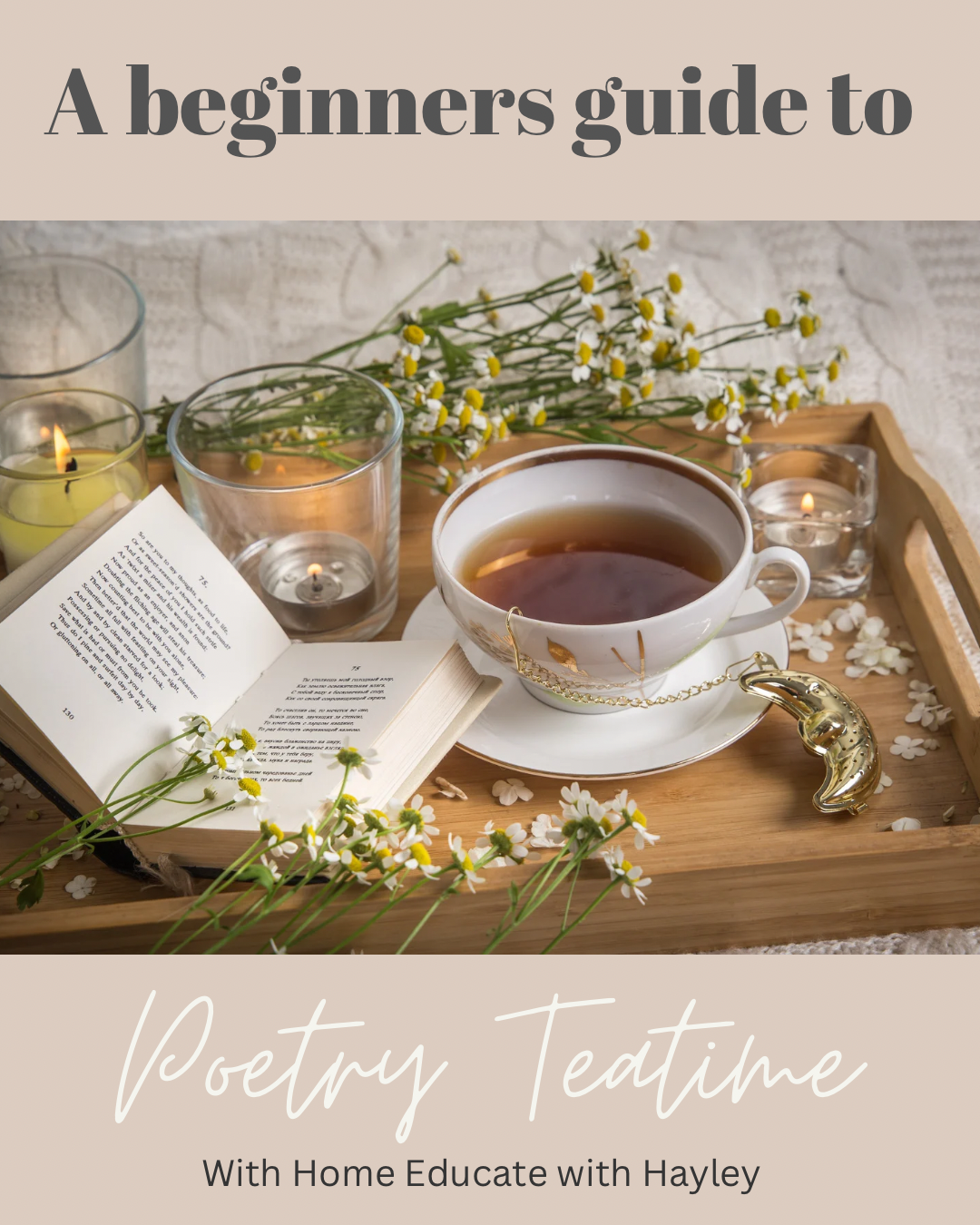In Todays blog we will be diving into the world of poetry teatime. A somewhat idillic and beautiful tradition shared by many home educators all over the world. However in this blog I want to show you ways that you can take the principles of poetry teatime and turn it into something simple that can work for your family without it needing to be instagram perfect.
Poetry Teatime: A Delightful Home Education tradition.
In the world of home education, creativity and flexibility are key. Parents and children alike discover that learning can be woven into the fabric of everyday life in ways that are both enriching and enjoyable. One such cherished tradition is Poetry Teatime, a beautiful blend of literature, art, and connection that has become a favorite in many home educating and homeschooling families all over the world.

What is Poetry Teatime?
Poetry Teatime is exactly what it sounds like: a dedicated time when families come together to enjoy poetry while sharing a fancy afternoon style tea. It’s a simple concept, but its impact on learning and family bonding can be profound. The idea was popularised by Julie Bogart, the founder of Brave Writer, who saw the value in making poetry accessible, fun, and a part of everyday life.
Creating the Atmosphere
One of the delights of Poetry Teatime is setting the scene. A traditional English afternoon tea with a modern twist can be just the thing to elevate the experience. Families often set the table or lay out a blanket on the floor with teacups, a teapot, and a tiered tray filled with treats like scones, sandwiches, and pastries etc (if you want to make an occasion of it I highly recommend popping to your local charity shop – you will always find a tea pot and some fancy china.) For those who prefer a simpler approach, a pot of hot chocolate, plate of custard creams or a bowl of Harribo’s is just as effective.
The idea is to really make poetry teatime stand out, so creating a calming, inviting and special atmosphere is important. Some families light candles, add a vase of fresh flowers, or play soft background music. Others may take their teatime outdoors, letting nature provide the perfect backdrop. The key is to create a warm, inviting space where everyone feels relaxed and ready to enjoy the beauty of words. Have a look on Instagram and use the hashtag #poetryteatime for inspiration but don’t be put off by all the fancy teacups

Choosing the Poetry
The beauty of Poetry Teatime lies in its flexibility. The poems you choose can be tailored to the ages, interests, and moods of the participants. For younger children, opt for fun, rhythmic poems by authors like Shel Silverstein or Dr. Seuss. Older children might enjoy the works of poets like Robert Frost, Emily Dickinson, or Langston Hughes which can open up discussions about life, nature, and the human experience. You can also mix in some humorous or seasonal poems to keep things lively and relevant.
An absolute all age favourite in our house is I am the seed that grew the tree which is a children’s poetry anthology that celebrates the wonders of nature with a poem for every day of the year. https://amzn.to/3YG7c9v
Invite Participation
Encourage your children to pick out poems they’d like to share. This involvement helps them feel more connected to the experience. You can also take turns reading aloud, or even try reciting poems from memory. Allow your children to express their thoughts and feelings about the poems, fostering discussions that deepen their understanding and appreciation.
You could even get your children to prepare their own piece of poetry to share. My children have developed their own tradition where they write an acrostic poem usually with the theme set by me (or more often than not something I’ve printed from Twinkl) Their poems seem to get more ridiculous every time and the older two have now got quite competitive in writing poems just to make the other end up in a fit of giggles.
The Educational Benefits
Beyond the immediate pleasure of sharing poetry and treats, Poetry Teatime offers a host of educational benefits. It introduces children to a wide range of literary forms, expanding their vocabulary, comprehension, and critical thinking skills. The act of reading poetry aloud enhances fluency and pronunciation, while listening to others fosters active listening and empathy.
Moreover, the discussions that follow a poetry reading can deepen understanding and encourage analytical thinking. Children learn to interpret metaphor, identify themes, and connect the content of a poem to their own experiences. These are valuable skills that can be applied across all areas of study.
Poetry Teatime can also be a gateway to other areas of learning. For instance, you can tie in history by reading poems from a specific era or culture you’re studying. Or, explore themes in science, nature, or art through the lens of poetry.
Building Family Connections
Perhaps the most significant benefit of Poetry Teatime is the way it strengthens family connections. In the midst of a busy week, it offers a moment of calm and togetherness. Sharing poetry in this way allows for a deeper connection between parents and children, as you explore emotions, ideas, and imagination together.
For many families, Poetry Teatime becomes a weekly or even daily ritual that everyone looks forward to. It’s a time when the pressures of the day can be set aside, and the simple pleasures of tea and literature take centre stage.
Making it personal
Like everything the beauty of home education is that you have the freedom to tailor your children’s education to suit them and your family. If poetry isn’t your thing but you love the idea of sitting together in this way you could always swap out the poetry for bible time, a read aloud, a time to nature journal, colour in or fill out gratitude diaries.
Keep It Light and Fun
Remember, the goal of Poetry Teatime is to enjoy literature and spend quality time together. There’s no need to make it overly formal or academic. Whilst sipping tea from vintage china sounds completely idealic, if you have a toddler running about you may need to change things up a bit. Let the atmosphere be relaxed and open, but not one where you are so focused on creating something that looks like it’s fallen straight out of a Pinterest board you end up stressed and worried that someone is going to smash your grandmas wedding china.
Practicality is key. Keep it simple, don’t worry if you have to use mugs you already have and snacks that don’t require much prep. A plate of biscuits, fruit, or even leftovers can work just as well as a Pinterest-worthy spread. If the thought of candles and tablecloths feels overwhelming, skip them! Instead, focus on the atmosphere: warm smiles, curious minds, and time spent together. Remember, poetry teatime is about connection and creativity, not about how it looks to others. Celebrate the small wins—whether that’s a poem that sparks laughter or just managing to keep the teapot upright amid the chaos.
By adding Poetry Teatime into your home, you’re not only fostering a love for poetry but also creating a space for meaningful conversations, laughter, and connection. This simple tradition can become a beloved part of your education journey, enriching both learning and family life.
Conclusion
Poetry Teatime is more than just an educational tool; it’s a celebration of language, creativity, and family. It brings the joy of poetry into the heart of the home, making it accessible to all ages. Whether you’re a seasoned home educator or new to the journey, incorporating Poetry Teatime into your routine can enrich your family’s educational experience and create lasting bonds that go beyond the pages of a book. So, brew a pot of tea, gather your favourite poems, and let the magic of words fill your home
